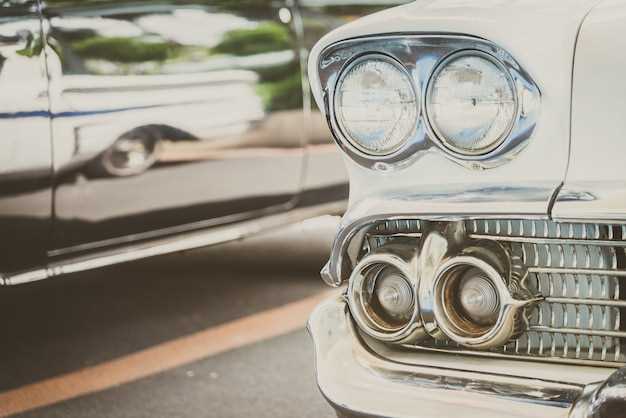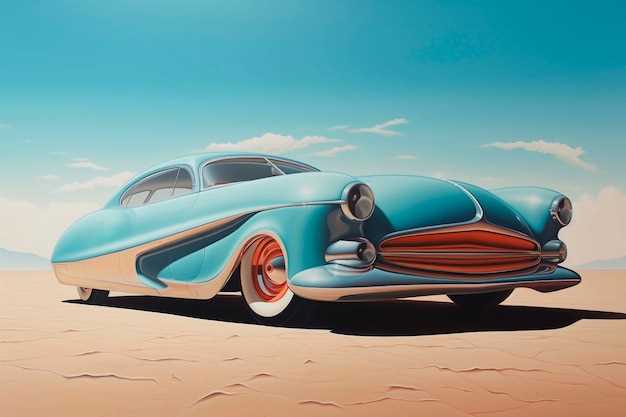
Classic cars have always been more than just machines; they are symbols of cultural evolution, exemplifying the values and aspirations of different eras. From the roaring twenties to the electric dreams of the twenty-first century, these iconic vehicles have played a pivotal role in shaping popular culture. Through their unique designs and innovative technologies, classic cars have influenced fashion, music, and even cinema, becoming integral to the narrative of each decade.
The relationship between cars and culture is deeply intertwined. As society progressed, so did the perception of automobiles as mere transportation. They transformed into status symbols, reflecting the socio-economic climate of their times. From the sleek lines of a 1965 Ford Mustang that defined the rebellious spirit of youth, to the luxurious elegance of a 1959 Cadillac that epitomized post-war prosperity, each classic car tells a story that resonates within the collective memory of a generation.
Moreover, the allure of classic cars extends beyond their aesthetic appeal; they have often stoked the flames of creativity in various art forms. Film directors, musicians, and fashion designers have drawn inspiration from these vehicles, embedding them in the heart of their works. As each decade passes, the nostalgic imagery of classic cars continues to revitalize our cultural landscape, underscoring their timeless significance in the broader tapestry of human expression.
Iconic Films and Their Impact on Vintage Car Popularity
Throughout film history, vintage cars have played a pivotal role in shaping pop culture, often symbolizing freedom, rebellion, and adventure. Iconic films featuring classic automobiles not only showcase these vehicles but also boost their popularity among audiences and collectors alike. From thrilling chases to romantic backdrops, the presence of classic cars in cinema has left a lasting impression on car enthusiasts.
One of the most influential films, “American Graffiti”, released in 1973, celebrates the golden age of the 1960s and reinvigorated interest in classic cars. The film features an array of automobiles, sparking nostalgia and inspiring a new generation to appreciate vintage models. The portrayal of youth culture and cruising in classic cars solidified their status as cultural icons.
Similarly, “Bullitt” (1968) introduced the world to the legendary Ford Mustang, led by Steve McQueen’s unforgettable performance. The film’s iconic chase scene not only showcased the car’s power and agility but also established the Mustang as a symbol of coolness and performance, influencing car design and culture for decades.
Another hallmark of cinematic history is “The Fast and the Furious” franchise, which initially focused on street racing and car culture. Vintage models featured in the series serve as a bridge between the past and present, creating a renewed interest in classic cars, particularly among younger audiences. The blend of nostalgia and adrenaline has made these vehicles synonymous with pop culture.
“Grease” (1978) also exemplifies how classic cars shape cultural perception. The film’s use of the 1949 Ford Deluxe became an iconic representation of 1950s Americana, linking vintage cars to the carefree youth of that era. This connection reinforces the idea that cars are more than just means of transportation; they are integral to identity and style.
The effect of these films extends beyond the screen, influencing automotive sales, restorations, and enthusiast communities. Vintage cars featured in popular films often become collector’s items, as fans seek to own a piece of the cinematic heritage. This interplay between film and car culture perpetuates a cycle where each reintroduction of classic automobiles in cinema fuels greater public interest.
In conclusion, iconic films play a significant role in elevating the popularity of vintage cars. Through engaging storytelling and memorable characters, these movies have cemented classic automobiles as vital elements of pop culture. As cinema continues to evolve, the relationship between film and vintage cars will undoubtedly remain strong, continuing to captivate new generations.
Musical Legends and the Classic Cars They Embraced

Throughout the decades, classic cars have been integral to the image and lifestyle of many musical legends. These iconic vehicles symbolize not only personal freedom but also the spirit of the pop culture eras they represent. From the sultry sounds of the 1950s to the rebellious rock vibes of the 1970s, classic cars have driven the narrative of music history.
In the 1960s, the Ford Mustang emerged as a symbol of youthful rebellion, embraced by artists like Janis Joplin. Her psychedelic-colored Mustang became a representation of the counterculture movement, aligning perfectly with the era’s demand for individuality and expression. This marriage of music and automobile became a lasting icon in both pop culture and automotive history.
As rock-and-roll solidified its dominance in the 1970s, the Chevrolet Camaro gained popularity among musicians like The Rolling Stones and Bruce Springsteen. These classic cars became the backdrop for countless concerts and music videos, epitomizing the free-spirited lifestyle that defined the genre. The powerful engines and sleek designs complemented the raw energy of rock music, leaving a lasting impact on both fans and the automotive industry.
In the 1980s, artists like Prince and Madonna drove classic cars that mirrored their larger-than-life personas. Prince’s Purple Rain featured the iconic 1983 Honda Gold Wing, demonstrating how vehicles could become key storytelling elements in music narratives. Such choices in classic cars helped these musicians craft their brand within pop culture, elevating their status and influence unprecedentedly.
As the decades progressed, classic cars remained symbols of status and rebellion. Whether it was the elegant Cadillac of the jazz age or the tough Dodge Charger in hip-hop music videos, these vehicles continued to shape and reflect cultural attitudes. The connection between musical legends and their classic cars is an enduring aspect of the evolution of pop culture, showcasing a fusion of auto design and artistic expression.
Fashion Trends Influenced by Classic Automotive Design

The relationship between classic cars and fashion is a captivating narrative that highlights how automotive design has influenced cultural trends throughout the decades. Iconic vehicles from the mid-20th century, such as the Ford Mustang and Chevrolet Corvette, have not only redefined driving but have also left an indelible mark on fashion. Designers often draw inspiration from the elegant lines, vibrant colors, and innovative materials seen in classic automobiles, resulting in clothing and accessories that echo the automotive aesthetic.
In the 1950s, the emergence of the American muscle car coincided with a youth-driven fashion revolution. The bold, angular designs of cars like the Pontiac GTO inspired colorful, structured pieces in casual wear, often incorporating vinyl and leather. This era saw young people embracing a rebellious spirit, reflected in both their choice of vehicles and their sartorial choices.
The influence continued into the 1970s as the “Glam Rock” movement took hold. The flashy designs of vehicles such as the Lamborghini Miura and Ferrari 365 GTB/4 made their way into the wardrobes of musicians and celebrities. Metallic fabrics, flamboyant prints, and sharp silhouettes mirrored the opulence of these classic cars, allowing individuals to express their extravagant lifestyles through both their fashion and their automobiles.
Entering the 1980s and 1990s, the classic car culture re-emerged with renewed vigor. Brands like Gucci and Prada began to incorporate automotive elements into their designs, utilizing checkered patterns and leather that paid homage to the racing heritage of classic cars. This blending of automotive elements with high fashion created a fusion that appealed to both car aficionados and fashion enthusiasts alike, underlining the deep connection between these two worlds.
In contemporary fashion, we see designers referencing classic car motifs through apparel and accessories. Luxury collections often draw from retro automotive colors and textures, allowing wearers to evoke the grandeur of bygone eras. Fashion shows frequently feature concepts inspired by old-world mechanics, with models strutting down runways that mirror the sleek lines and aesthetic brilliance of classic vehicles.
Classic cars are not just modes of transportation; they are powerful cultural icons that continue to shape fashion trends. By understanding the intricate relationship between automotive design and fashion, we see how these classic machines inspire creativity, innovation, and a timeless sense of style that transcends generations.



